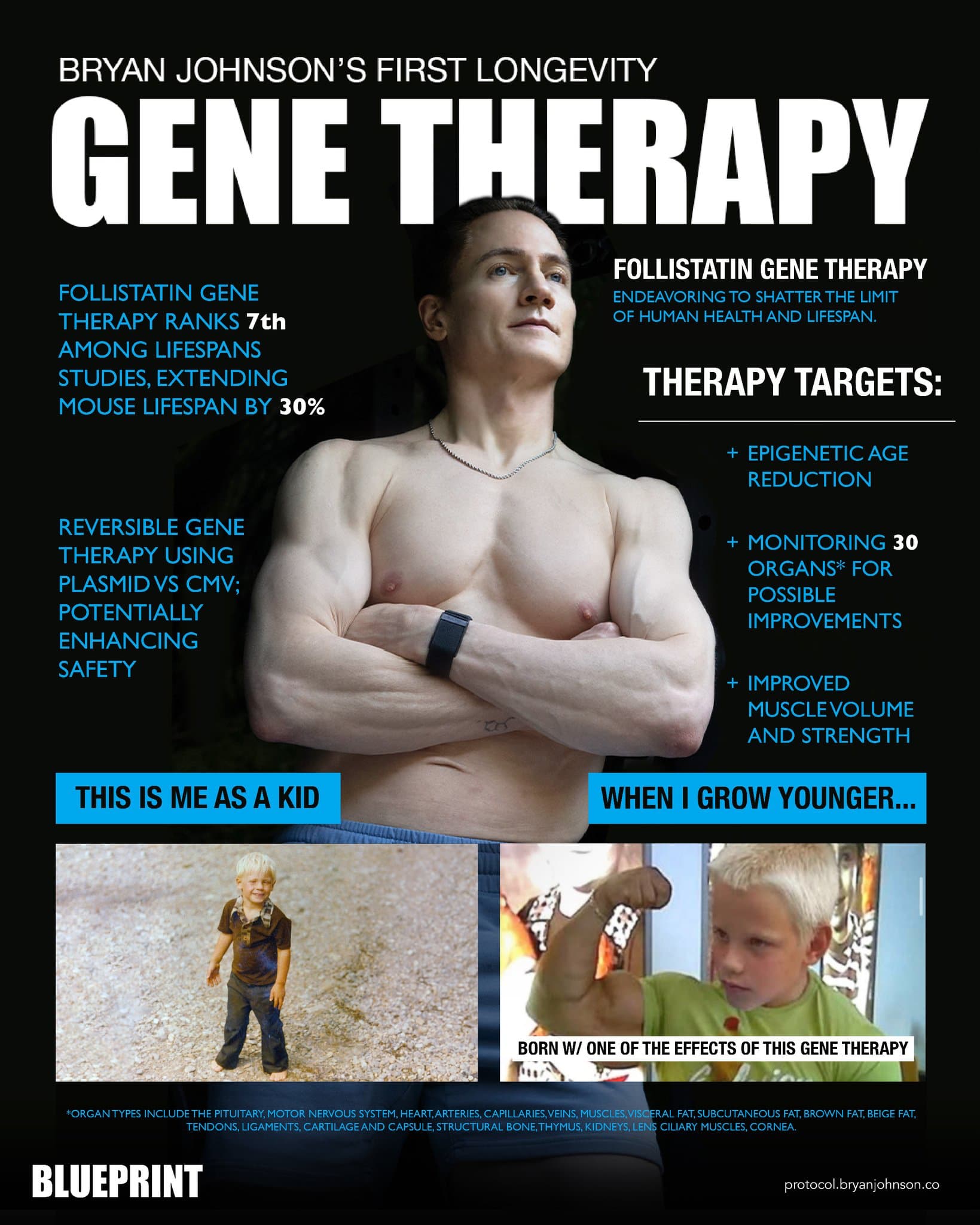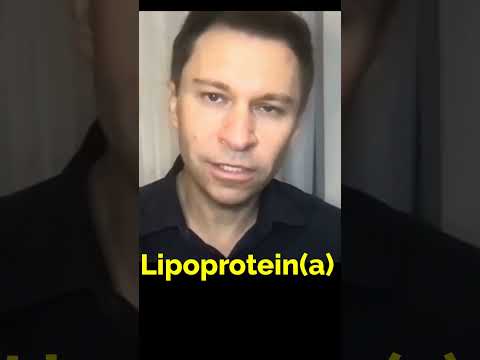I think it is reasonable to hypothesise that scar tissue forms when cells fail to differentiate properly and end up as senescent. Hence if you can kick them into differentiation you can get the scarring to reduce.
I had always thought that scarring was due to your cells filling in a gap with collagen when there are not enough viable cells in the area to completely compensate for the damaged or missing ones.
Collagen is like the cement patches you fix your walls with. Your body uses collagen when it needs to create scar tissue.
There is not necessarily a disagreement between these positions. If there are not enough viable cells then there would logically be a cause for this.
Sorry if I missed a discussion of this - what it is referring to?
Just a reference to some really wild things people are working on (and which its entirely conceivable that BJ would adopt: Longevity Resources from the Foresight Institute - #4 by RapAdmin
This is a joke, right?
Who is the little kid in the bottom right?
Its on his twitter account
https://twitter.com/bryan_johnson/status/1699097438227968189
I think there are better ways of trying to overcome sarcopenia. The problem with this sort of approach is that it aims to change the symptoms rather than fixing the cause.
No - not a joke at all.
I worked for a year trying to do a startup genetic engineering company to allow something similar to what is being talked about here.
A few genes control muscle growth and repair; key amoung them are the follistatin and myostatin genes and the IGF-1 gene. Some kids have been found to have mutations in one of these genes, and the results are pretty crazy. These kids are super strong (and evidence also suggests they will likely live longer). If you overexpress, or increase the copy number, of these genes in your muscles you will likely experience the same benefit. Its coming as a therapy, even if its not here yet…
Some reading for those interested:
Here is the scientific paper written by the German boy’s doctor:
Myostatin Mutation Associated with Gross Muscle Hypertrophy in a Child
Muscle wasting and weakness are among the most common inherited and acquired disorders and include the muscular dystrophies, cachexia, and age-related wasting. Since there is no generally accepted treatment to improve muscle bulk and strength, these conditions pose a substantial burden to patients as well as to public health. Consequently, there has been considerable interest in a recently described inhibitor of muscle growth, myostatin, or growth/differentiation factor 8 (GDF-8), which belongs to the transforming growth factor β superfamily of secreted proteins that control the growth and differentiation of tissues throughout the body. The myostatin gene is expressed almost exclusively in cells of skeletal-muscle lineage throughout embryonic development as well as in adult animals and functions as a negative regulator of muscle growth.1,2 Targeted disruption of the myostatin gene in mice doubles skeletal-muscle mass.1 Conversely, systemic overexpression of the myostatin gene leads to a wasting syndrome characterized by extensive muscle loss.3 In adult animals, myostatin appears to inhibit the activation of satellite cells, which are stem cells resident in skeletal muscle.4,5
The potential relevance of myostatin to the treatment of disease in humans has been suggested by studies involving mdx mice, which carry a mutation in the dystrophin gene and therefore serve as a genetic model of Duchenne’s and Becker’s muscular dystrophy.6 For example, mdx mice that lacked myostatin were found not only to be stronger and more muscular than their mdx counterparts with normal myostatin, but also to have reduced fibrosis and fatty remodeling, suggesting improved regeneration of muscle.7 Furthermore, injection of neutralizing monoclonal antibodies directed against myostatin into either wild-type or mdx mice increases muscle mass and specific force, suggesting that myostatin plays an important role in regulating muscle growth in adult animals.8,9
The function of myostatin appears to be conserved across species, since mutations in the myostatin gene have been shown to be responsible for the “double-muscling” phenotype in cattle.10-13 The phenotypes of mice and cattle lacking myostatin and the high degree of sequence conservation of the predicted myostatin protein in many mammalian species have raised the possibility that myostatin may help regulate muscle growth in humans. We report the identification of a myostatin mutation in a child with muscle hypertrophy, thereby providing strong evidence that myostatin does play an important role in regulating muscle mass in humans.
Actually it’s here already. Maybe you know about this company?
They offer follistatin and Klotho gene therapies, if you’re willing to fork out 100k a pop.
George Church has talked a lot about working to bring down gene therapies to around 2 dollars a dose like the COVID vaccine.
The barrier as ever is cost. I’ll be first in line for Klotho.
I would think a lot of professional athletes would be doing this.
Possibly. Although, I’m not sure how widely known it is at the moment.
And it’s very much in a legal area I believe. I’m glad someone is doing it though.
Yes - “gene-doping” is going to be a booming area. It will be interesting to see how the World Anti-doping Agency deals with it.
Interesting - I’ve never heard of this “integrated Health Systems”…
What I find strange is that they have absolutely no names (i.e. professionals who have a background in gene therapies) listed on the website , in fact no names at all that I can find.
I was working with PHDs out of Stanford U. with published papers and patents. This company looks like more of some sort of vaporware site setup by who knows?
Click on “Team” for the website, and it takes you to “consultation” where they have “testimonials” with “patient 1”, “patient 2”, etc. and… no team.
Given the vagueness and lack of information on the site - I’d avoid it at all costs. Anything that doctors don’t want to put their name on is something to be afraid of.
Minicircle is more legitimate, but still on the edge: Our Therapies - Minicircle
At least with Minicircle you can research the principles of the company: About Us - Minicircle
You can search on LinkedIn and at least find a few people associated with Minicircle:
But its a little scary to me that the founder doesn’t have any academic credentials associated with science or medicine:
Walter Patterson (no academic qualifications listed)
https://www.linkedin.com/in/walter-patterson-2b7a45a4/
Mac Davis (3 years of science education -… seems like undergrad, as no indication of graduate level work)
https://www.linkedin.com/in/macdavis/
Watched a short video by Sinclair, that talked about 5 longevity biomarkers. One of them is Albumin, 1st I heard. Is anyone tracking it as a longevity marker? How has your Albumin trended since started on Rapamycin?
Yes - albumin is one of the standard measures in the Levine Phenotypic calculator. In my 4 years on rapamycin there has not been much change - its at 4.6 mg/DL typically.
See the old news below from Dr. Morgan Levine (creator of the Levine Phenotypic biological age calculation)… on Rapamycin’s impact on epigenetic measures of aging… I have attached the Excel Spreadsheet for doing your own Levine Phenotypic Age calculations at the bottom of this post (from Mike Lustgarten’s page) developed by Nick Engerer.
https://twitter.com/DrMorganLevine/status/1468025405877669892?s=20
3ba41-dnamphenoage_gen-1.xls (31.5 KB)
Just did a quick check of blood panels… my albumin from 3 months before I even started rapamycin in July 2020 was at 4.1 g/dL.
Has stayed in that range past 3 years on rapamycin… checked every 3-4 months 4.1 to 4.5.
Last test in Mid-April was 4.4 g/dL so literally no change before rapamycin and after 3 years of continuous use.
Hmmm?
The longevity papers I saw were from almost a decade ago. Have there been more support for that aspect since then? Mopst of the papers seem to be about muscle and anti-frailty.
Wonder if one way to think about this is to wait until one is old enough that one starts experiences muscle loss/weakness (but before sarcopenia).
Ie less need earlier in life and more need later in life.
Perhaps this also means that for those with some decades left until those ages, we should perhaps go more with the “Valter Longo” type of approach to protein than “Peter Attia” approach - perhaps that with these muscle therapeutics coming online we do have to overload with muscle today to avoid frailty in future decades…?
Finally, found this paper interesting - discusses how big the potential of myostatin therapies from pre-clinical models led to large clinical efforts the last two decades, but with little result. Though it does seem that the paper thinks gene therapy might have a bigger chance than more conventional medicines have shown.
So my understanding is that this company is in some way related to Liz Parish. I haven’t looked at the site for a while. I have a feeling that they may have taken some information down, probably for legal reasons. I remember a watching a few interviews with the principals a few years back.
I agree with you that it’s questionable. Again, all of these treatments exist in a grey area. I’m not sure it’s legal to offer the treatment and I seem to remember they operate outside the US. I’ll wait until it’s proven safe and effective.





